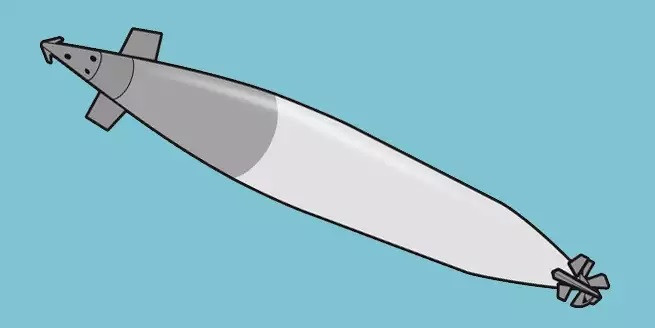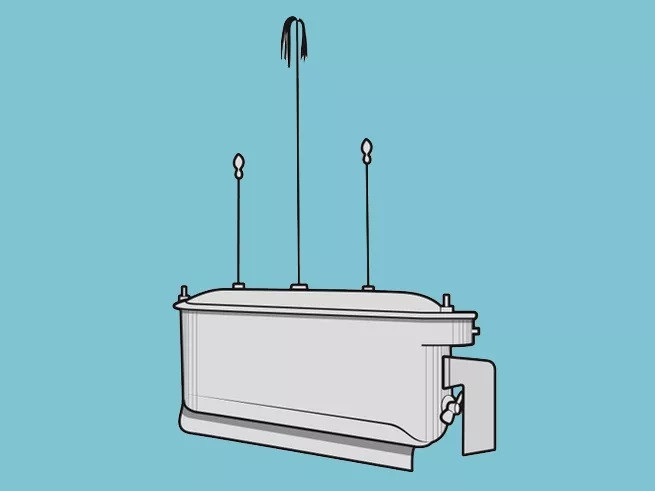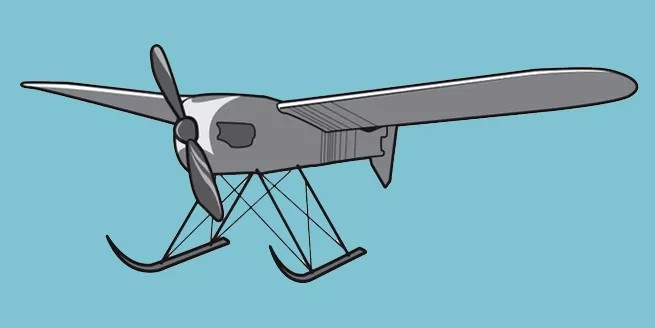Development history of smart weapons
Since being able to handle tools, humans have constantly thrown weapons at each other, at different levels of accuracy. But within the last 100 years we have created self-driving rockets.
We have been through a century of experimenting in an effort to create larger, more powerful and more accurate bombs. When the technology was improved, the weapon moved from manual control torpedoes to bombers to independent cruise missiles. Here are some of the most important steps.
1879: Brennan torpedo

Invented by Louis Brennan.
Louis Brennan designed one of the first guided missiles. The docks have installed this torpedo to protect the coast, towards the enemy ships and use steel wires connected to two onshore coils.
1898: Tesla's remote control boat

Invented by Nikola Tesla.
Nikola Tesla demoed a 1.2m long model boat controlled by radio waves at an electrical exhibition. According to Tesla's theory, this technology could lead to the development of wireless explosives, but no one applied his design.
1917: Aerial target

A World War I bomber.
Most trials of the original unmanned bombers ended by accident because radio control is limited to up / down and left / right operations. Better improvements were made after the war, along with better-tuned projectiles.
1944: V-1 rocket

During World War II, the Allies called it "flying bombs".
To control the first cruise missile in combat, German engineers installed a simple rotary to balance and a compass to lead the way. Each time the target is set, the bomb meter counts the rotating rotor blades and disconnects the rudder when the bomb reaches the destination.
1950: Lark rocket

This missile was developed by the US Navy.
In order to fight suicide fighter pilots during World War II, the US Navy began developing ground-to-air missiles, but it took six years for Lark to guide with radar.
1953: Sidewinder rocket

This is an alternative to radar missiles that require pilot control.
When in need of an alternative to radar missiles that needed the pilot's control, the US Navy developed a heat weapon with infrared navigation. The Sidewinder is so accurate and cheap that some versions of it are still used by the military to this day.
1983: Tomahawk missile

Invented by General Dynamics Company.
General Dynamics began developing Tomahawk in the 1970s. Today's upgraded versions are driven by GPS and by combining images from cameras with maps, all arranged with built-in computers. Tomahawk.
2018: Long-range anti-ship missiles

This is one of the top security inventions in 2017.
LRASM combines radar and infrared sensors targeting ships. An automated targeting system allows to identify and destroy enemies without human control.
- Amazingly, the gun only shot when placed next to the clock
- History of formation and development of nuclear energy
- How were biological weapons born?
- Vietnam produces smart bombs, bullet timers
- History of currency development
- Super smart rifle hit without much training
- Bill Gates announced the Big History Project: History of 13.7 billion years of the universe
- US research uniform 'super smart'
- 'Self-thinking' cruise missiles - the goal of Russian military engineering
- Weapons that dominate the future
- 4 types of weapons of separation of powerful and scary tribes in history
- Listed the 7 most evil weapons in human history
 'Fine laughs' - Scary and painful torture in ancient times
'Fine laughs' - Scary and painful torture in ancient times The sequence of numbers 142857 of the Egyptian pyramids is known as the strangest number in the world - Why?
The sequence of numbers 142857 of the Egyptian pyramids is known as the strangest number in the world - Why? History of the iron
History of the iron What is alum?
What is alum?